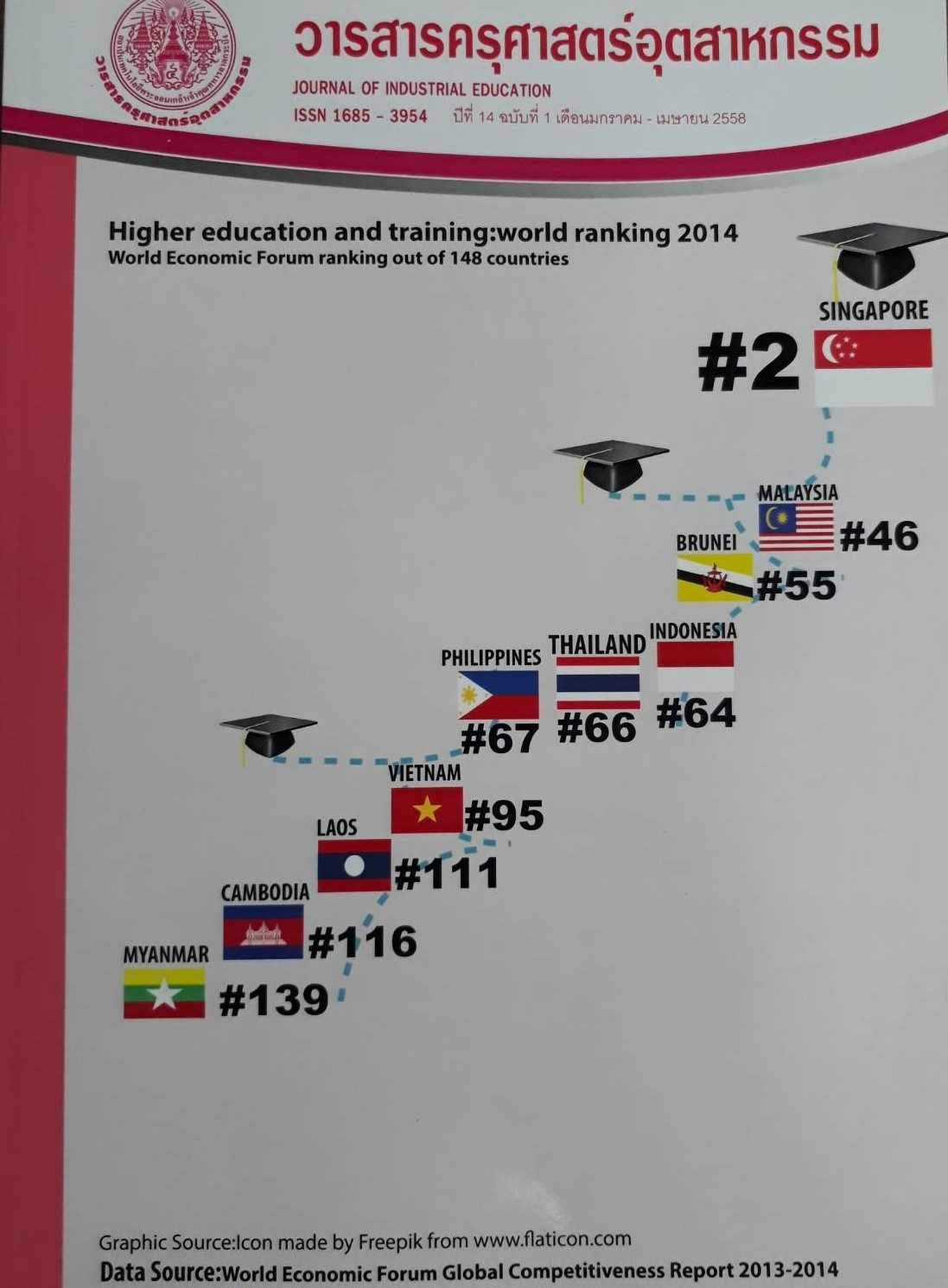Good Practice of Bandonkaidee Benjarong Community Enterprises in Kratumban District, Samut Sakhon Province
Keywords:
Good Practice, Benjarong, Local Wisdom, Community Enterprises, Samut Sakhon ProvinceAbstract
The objective of this research was to study a good practice in manufacturing the traditional five-coloured Thai ceramic products in Bandonkaidee community enterprises, Krathumban District, Samut Sakhon Province. The interview was applied with a total of 16 Leaders and members of the community enterprises, including potters, drawers and painters who were responsible for their production and marketing. The data derived were then analyzed with a content analysis.
It was found that the community enterprises were run and operated in a form of aggregation as a network. With such a concept, market-related production tasks were equally delegated to their members.
The identity of Thai culture with Thai traditional and Thai applied designs was communicated through the perfectly matched-colouring products reflecting an identity of each country. As a result, the Traditional Five-coloured Thai Ceramics were given a foothold in a various markets abroad. The products could generate higher incomes for the community enterprises than solitary high-quantity products sold in domestic markets.
A co-operative management and a traditionally-based technology production since “Urai Tang-auim” the ex-employee of that factory pushed her to be an outstanding leader of the community enterprises in terms of management based on a group participatory concept. Her leadership quality also enhanced the four newly-groomed leaders who grew as a powerful asset for their network development which became a learning center for their community and visitors.
References
[2] วรรณดี สุทธินรากร จินตนา กาญจนวิสุทธิ์ ศิริพร ตันจอ และสมเกียรติ สุทธินรากร. 2558. รายงานการวิจัยฉบับสมบูรณ์ เส้นทางการเรียนรู้และ การบริหารจัดการที่ดีเพื่อยกระดับความสามารถใน อาชีพ และการมีชีวิตที่ดีของวิสาหกิจชุมชน จังหวัด สมุทรสาคร เพื่อขับเคลื่อนเศรษฐกิจชุมชนตามปรัชญา เศรษฐกิจพอเพียง. กรุงเทพฯ: สำนักงานคณะกรรมการ วิจัยแห่งชาติ.
[3] บูรชัย ศิริมหาสาคร. 2548. การจัดการความรู้สู่องค์กร อัจฉริยะ. นักบริหาร. 25(4), น.39-42.
[4] Hatice, Camgoz A. 2007. Total Quality Management through Six Sigma Benchmarking a Case Study. Benchmarking : An International Journal. 14(2), pp.186-201.
[5] McAdam, R. and Kelly M. 2002. A Business Excellence Approach to Generic Benchmarking in SMEs. Benchmarking : An International Journal. 9(1), pp.120- 127.
[6] Zairi, M. and Whymark, J. 2000. The Transfer of Best Practices: How to Build a Culture of Benchmarking and Continuous Learning-Part 2. Benchmarking : An International Journal. 7(2), pp.146-147. .
[7] Lord, Robert G. and Maher, Karen J. 1993. Leadership and Information Processing: Linking Perception and Performance. London: Rout ledge.
[8] Sutthinarakorn, W. Kanjanavisut, C. Sutthinarakorn, S. and Abdulsata, P. 2014. The Implementation of Production and Marketing Activities to Enhance the Capability of the Community Economy of the Enterprises in Samutsakorn Province, Thailand. International Conference on Social Education and Management Engineering (SEME 2014). Macao Special Administrative Region of the People’s Republic of China. pp. 287-290.
[9] วัชรี โรจน์วรารักษ์ ภัคพงษ์ ปวงสุข และณัฐวุฒิ โรจน์นิรุตติกุล. 2556. ส่วนประสมทางการตลาด ในการตัดสินใจซื้อเครื่องดื่มชาเขียวพร้อมดื่มของ ผู้บริโภคในเขตกรุงเทพมหานครและปริมณฑล. วารสารครุศาสตร์อุตสาหกรรม, 12(3), น.191-198.
[10] จุฑาทิพย์ นามวงษ์ และสิทธิชัย สมานชาติ. 2557. การเพิ่มคุณค่าเส้นใยพืชชุ่มน้ำด้วยกระบวนการ พัฒนาการออกแบบและแปรรูป. วารสารครุศาสตร์ อุตสาหกรรม, 13(2), น.42-49.
Downloads
Published
How to Cite
Issue
Section
License
"The opinions and contents including the words in papers are responsibility by the authors."
"ข้อคิดเห็น เนื้อหา รวมทั้งการใช้ภาษาในบทความถือเป็นความรับผิดชอบของผู้เขียน"



